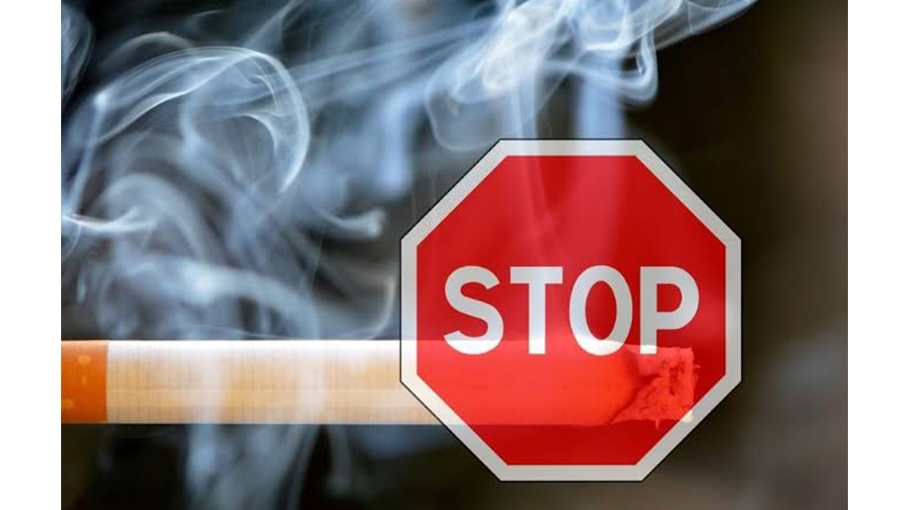Tobacco a threat to environment
One more reason to quit

Mr. Hafizul Mina, a tobacco user of 35 years, began smoking cigarette as an adolescent. He continued to smoke throughout his adulthood on and off, often more excessively when he was stressed. Then in his adulthood, he developed the life-changing, tobacco-related lung cancer and had chemotherapy and surgery as a process of treatment. In a 30-second public service announcement (PSA), aired on all major national TV channels in Bangladesh, Mr. Mina is shown talking to his cancer specialist about how tobacco has affected his health, including the urgency for lung cancer surgery. He holds up a cigarette pack with a warning image of lung cancer and delivered the powerful message: “Smoking causes lung cancer. It’s on the packs. See it… Believe it!”.
Unfortunately, Mr. Hafizul Mina is only one of many patients with significant tobacco-related diseases who have been featured on television. Doctors find it particularly frustrating since these diseases are completely avoidable, yet they cause significant harm and distress to the individual and their family.
In Bangladesh, tobacco usage habit tends to increase during the period of adolescence and approximately 90 per cent of smokers in low- and middle-income countries begin smoking before the age of 18. Importantly, due to the highly addictive nature of tobacco, smoking throughout adolescence observed to continue into adulthood .
Tobacco uses even contributes to the development of at least 20 different kinds of cancer, accounting for almost one–quarter of all cancer–related deaths . The National STEPS survey for Non-Communicable Diseases risk factors in Bangladesh 2018 demonstrated that 43.7% of adults aged 18 to 69 years used any type of tobacco product (smoked or smokeless). Additionally, 23.5% of adults were current tobacco smokers and 27.5% were current users of any smokeless tobacco product and 7.2% of adults used both smoke and smokeless tobacco products.
Moreover, in Bangladesh, compared to never users, tobacco users have a 57% higher risk of developing a tobacco-related disease such as ischemic heart disease, stroke, chronic obstructive pulmonary disease, or lung cancer, and a 19% higher risk of tobacco-related cancer. In addition, around 42.7% of adults are exposed to tobacco smoke at work, 49.7% of adults are exposed while visiting outside, and 44% of adults are exposed to secondhand smoke while using public transportation. Besides, in public locations, around 59% of teenagers (ages 13-15) are exposed to secondhand smoke, whereas 31.1% are exposed at home.
When it was revealed that smokers with Covid-19 were more likely to develop chronic diseases than
non-smokers, it influenced millions of smokers to quit the habit of tobacco use.
However, quitting without proper assistance can be extremely difficult. So, World Health Organization (WHO) encourages the government of Bangladesh, as well as other countries across the world, to help tobacco users in quitting by providing assistance, services, legislation, and tobacco taxes.
Our government and
policymakers must take necessary steps to make
tobacco producers
accountable for the harm they are causing
to our environment
In fact, it is proved that smoking one cigarette per day can reduce the chance of getting coronary heart diseases and stroke by around half . However, non-smokers, especially the children and adolescents, who die each year from secondhand smoke exposure, might benefit from these smoke-free regulations.
These smoke-free regulations also become a must need because tobacco production, manufacture and use; pollute our water, land, beaches, and city streets with chemicals, toxic waste, cigarette butts, containing microplastics, and e-cigarette waste . Besides, the use of pesticides to produce tobacco plants, as well as deforestation (approximately 31% of overall deforestation in Bangladesh ) and the usage of enormous amounts of water, affects the ecosystems and reduces climate resilience .
The tobacco industry’s effect on environment is harmful which is increasing, placing unnecessary burden to our planet’s already scarce resources and vulnerable ecosystems. Interestingly, people generally think of the health risks associated with tobacco use when they hear about it. But they completely overlook the crucial issue of how it affects the environment.
However, with this year’s theme “Tobacco – Threat to Our Environment”, the World No-Tobacco Day promotes public awareness about the damages that tobacco products cause to people and their health, communities, and the environment throughout its lifecycle.
As a development worker, I believe that reducing tobacco use can help achieving all of the Sustainable Development Goals, and our government and policymakers must strengthen the existing schemes to make accountable tobacco producers for the harm they are causing to our environment.
Dr. Shamim Hayder Talukder is Chief Executive Officer, Eminence Associates for Social Development



